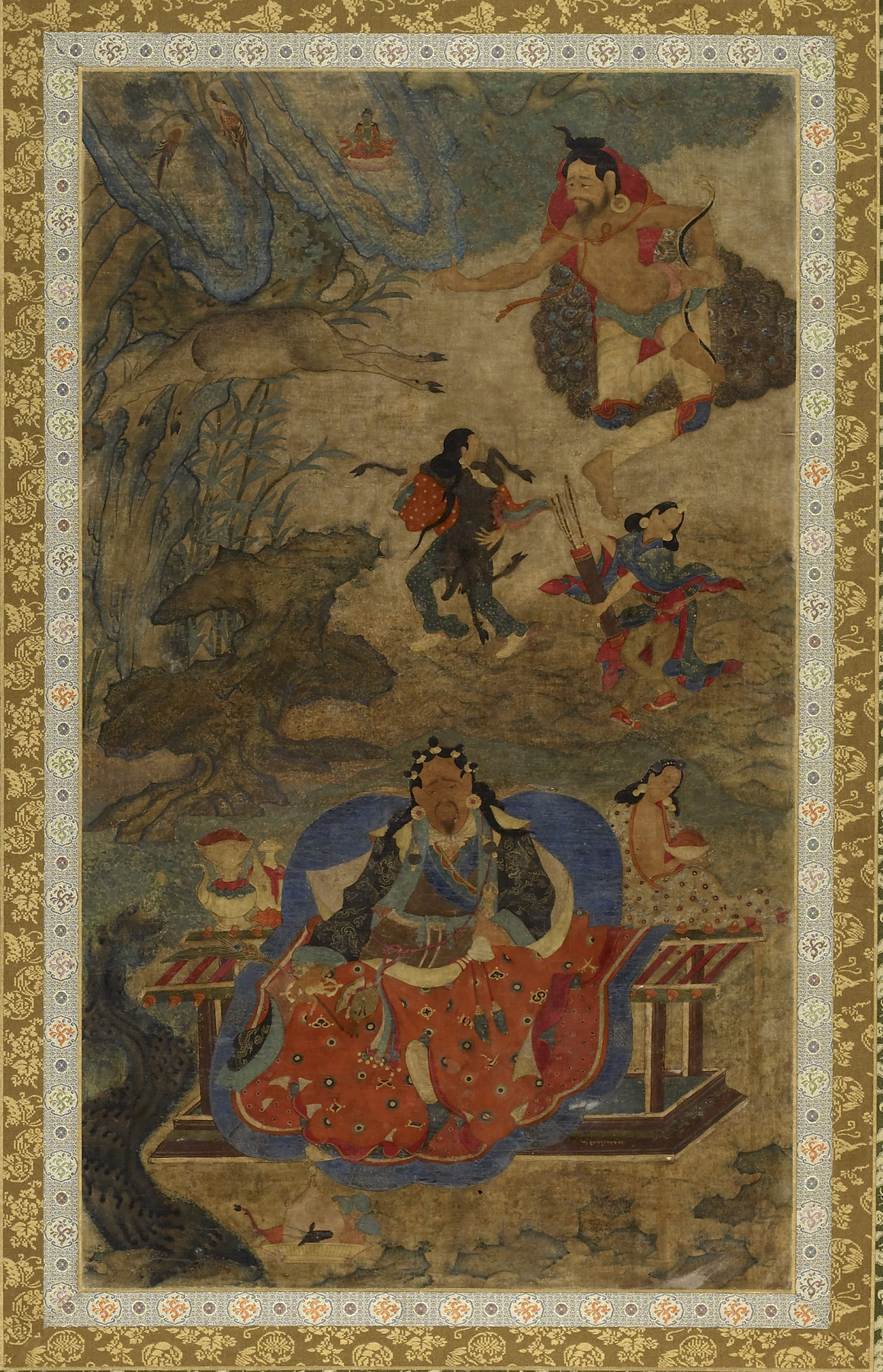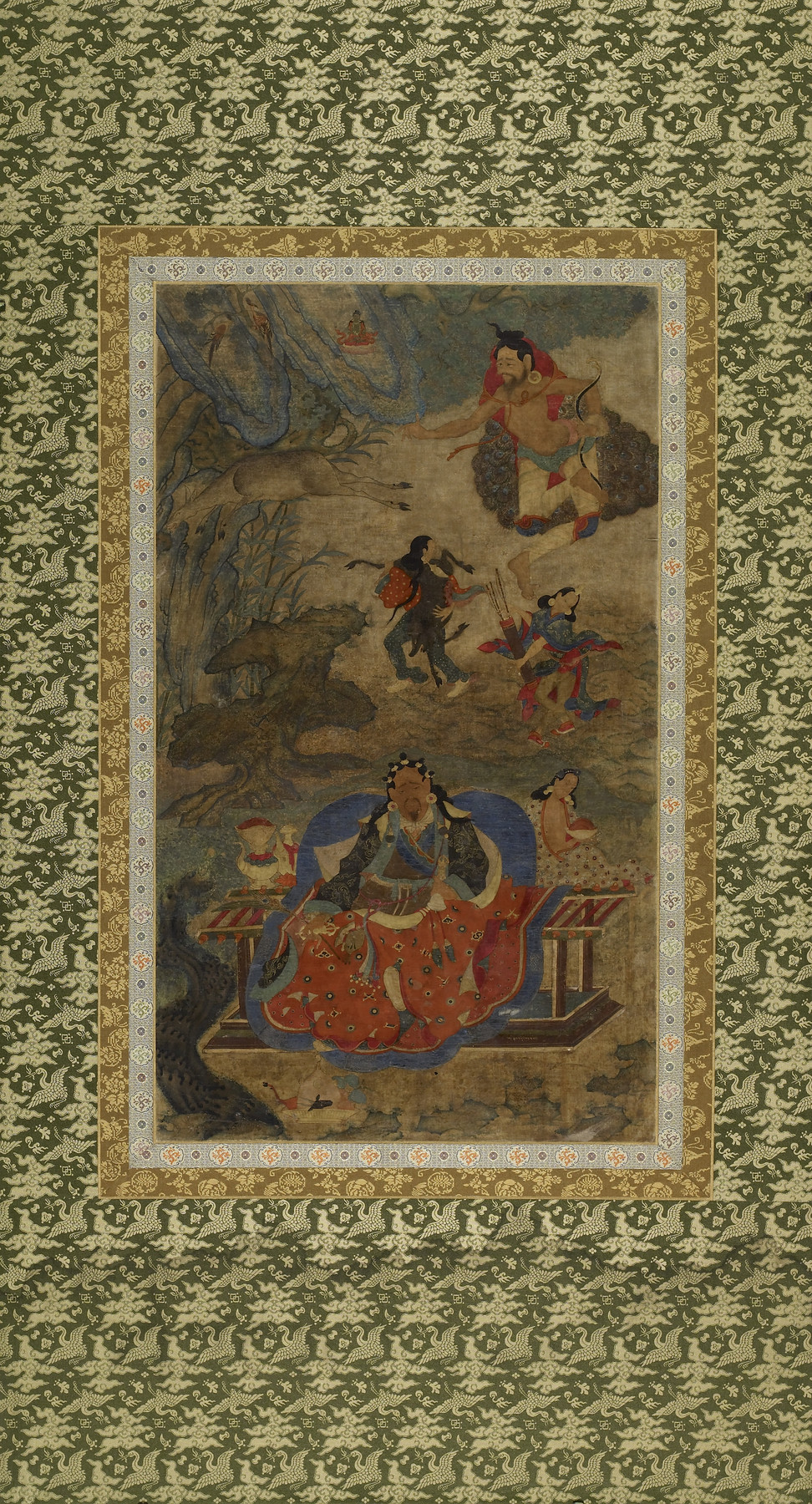Mahasiddhas Shavaripa and Dharikapa
(India, Nepal, and Tibet)
Painted in a style closely related to Chinese painting, two of the eighty-four mahasiddhas (“great perfected ones”) float in a landscape of craggy rocks and stylized trees. In tantric Buddhist traditions, the mahasiddhas are regarded as great adepts who have achieved spiritual powers and enlightenment, sometimes through unconventional means.
In the upper portion of the painting is Shavaripa, who had been a hunter until the bodhisattva Avalokiteshvara showed him and his wife a vision of themselves in hell—their karmic fate, should they continue to kill animals. Shavaripa renounced hunting, and after meditating for twelve years he attained enlightenment, thereafter remaining on earth to teach the path to spiritual liberation. Here, Shavaripa is depicted twice: in the middle of the painting, he carries a slain animal while his wife follows with a quiver of arrows, and at the top of the painting, he appears to levitate against a backdrop of peacock feathers, a reference to another name by which he is known, “Wearer of the Peacock Plume.”
The lower portion of the painting depicts Dharikapa, a king who abdicated his throne to become a disciple of the mahasiddha Luipa. Having renounced all possessions, Dharikapa offered himself in slavery to Luipa in order to cover the fee paid to one’s guru. In time, Luipa sold Dharikapa to a temple dancer named Dharima. After he had served her for twelve years, one day Dharima witnessed Dharikapa sitting on a levitating throne and teaching the tantric path to enlightenment. Begging his forgiveness for his enslavement, she asked to become his disciple. Dharikapa is represented in voluminous robes, holding the vajra-scepter and the bell, while a woman, probably Dharima, stands behind him holding a skull bowl.
Provenance
Provenance (from the French provenir, 'to come from/forth') is the chronology of the ownership, custody, or location of a historical object. Learn more about provenance at the Walters.
Eric Chazot, Paris, France; purchased by John and Berthe Ford, Baltimore, June 1987; given to Walters Art Museum, 2015.
Exhibitions
| 2006 | Holy Madness: Portraits of Tantric Siddhas. Rubin Museum of Art, New York. |
| 2001-2003 | Desire and Devotion: Art from India, Nepal, and Tibet in the John and Berthe Ford Collection. The Walters Art Museum, Baltimore; Santa Barbara Museum of Art, Santa Barbara; Albuquerque Museum, Albuquerque; Birmingham Museum of Art, Birmingham; Hong Kong Museum of Art, Hong Kong. |
Geographies
Tibet (Place of Origin)
Measurements
H of image: 25 1/2 × W: 15 in. (64.8 × 38.1 cm); Framed H: 46 3/8 × W: 25 3/8 in. (117.79 × 64.45 cm)
Credit Line
Gift of John and Berthe Ford, 2015
Location in Museum
Not on view
Accession Number
In libraries, galleries, museums, and archives, an accession number is a unique identifier assigned to each object in the collection.
In libraries, galleries, museums, and archives, an accession number is a unique identifier assigned to each object in the collection.
35.319






